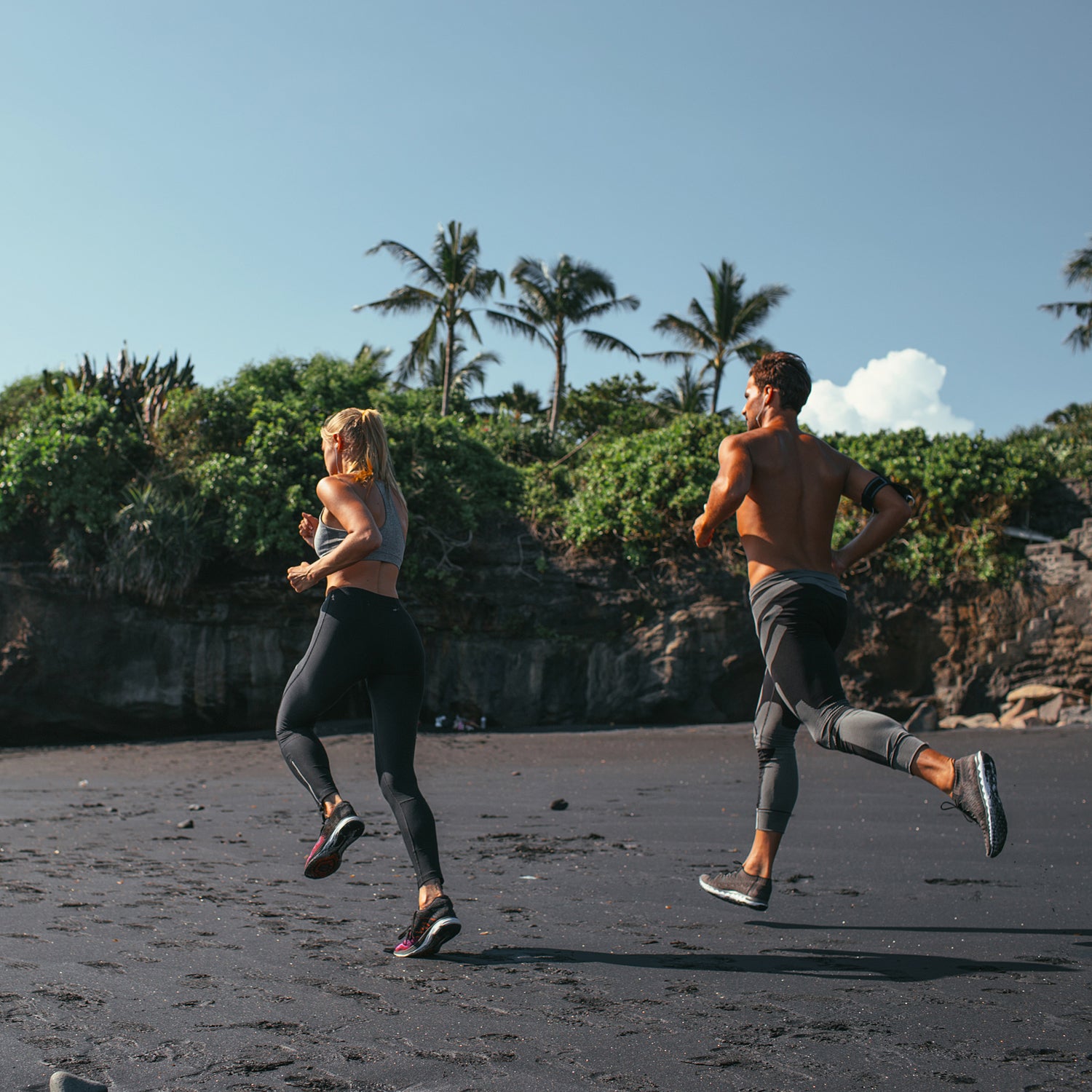In algebra, we learned that adding an “X” to an equation could change the whole thing. And it turns out that in biology, the same rule applies. Women—with our twin set of X chromosomes—have nutrition equations that balance differently than the XY-carrying men competing alongside us.
“Almost every woman I talk to is eating a certain way—whether they’re doing Paleo or intermittent fasting—because their male coach or husband or boyfriend told them to do it,” says Stacy T. Sims, an exercise physiologist at Stanford. But she adds: “And while it’s probably working for her husband, for her, it’s a disaster.”
Sims is an elite athlete, founder of��Osmo Nutrition,��and the co-author of the new book . Since graduate school, she’s been studying how having two X chromosomes affects performance. Her message: women are not small men, so it’s time to stop fueling and behaving��like them.��
If you’ve ever wondered why something happens to you but not to your male training partners, this book likely covers it—from how menopause and pregnancy affect fitness to why women tend to have colder hands and feet (a real bummer on winter bike rides). But much of �鰿��������focuses on the idea of female-specific nutrition, which is��new concept for many of us. Sure, food marketers have been lobbing gender-specific snacks at us for years—from pink-topped yogurts to low-calorie cereals to “skinny” cocktails. But sex and gender are different, and the idea that sex may be sabotaging our fueling efforts is a surprising revelation, even for athletes well versed in sports nutrition literature.��
Women are not small men, so it’s time to stop fueling like them.��
Of course, it makes sense that much of what we consider gospel is based off of male-centric research. “Women are complicated research subjects because of our hormone fluctuations, potential for pregnancy, and so on,” says , an elite bike racer, health journalist, and co-author of ROAR. “[It’s] just easier to extrapolate data from the guys,” she says. “Historically the field was also male dominated, so it probably wouldn’t really occur to men to specifically study women in this way.”��
��
The biggest nutritional mistake Sims sees most female athletes making is not eating enough—especially when it comes to carbs. While your husband may get super lean on a Paleo diet, your results may be lackluster. And from an evolutionary standpoint, this is logical. Sims says that since men were traditionally the tribe’s hunters, losing weight in lean times translated to lighter—and therefore faster—prey stalking.��
But for women, severe calorie, and particularly carbohydrate, restriction leads to a change��in hormone production. As soon as we slash carbs, our bodies start producing cortisol, a hormone that signals the storage of fat. Sims says our lady ancestors evolved to store fat during famines—i.e. in times of reduced carbohydrate intake.��
Now, because there are no hard and absolutes in dieting, some women may do fine on Paleo, but others will struggle. While you may not actually gain weight, your weight loss may be slow or you may just feel like absolute junk. “You can probably get by [on a low carbohydrate diet] for a few months, but after that, women start to feel crappy and have menstrual dysfunction,” she says.��
Sims says that, at the very least, most women need between 120-130 grams of carbohydrates per day to support proper brain and endocrine function. They’ll need more if they’re working out.��
Even Yeager—who writes about nutrition for a living—discovered that she wasn’t eating enough carbs when she and Sims sat down to do a thorough analysis of her diet. “I had dialed too far back; so we increased it—more sweet potatoes, quinoa, etc. My energy levels are much better,” says Yeager. Sims adds that if athletes are nervous about eating too many carbs, she’ll have them start by adding a few in before and after workouts, when they’ll feel the biggest benefits in terms of energy and recovery. When they feel the boost in energy and performance, she says they almost always come around to her methods.��
But ROAR isn’t just a 270-something-page manifesto on why women need carbs. There’s much more to it, including instructions on how to eat and hydrate for peak performance during different phases of your menstrual cycle. Sims argues that during low hormone phases (the time during and immediately after your period), your physiology is most like that of a man. So racing with your period is actually a good thing. But during high hormone phases (like right before your period), building muscle and staying hydrated become much more difficult. If you have the symptoms of PMS, she recommends consuming more high-leucine protein sources (like whey protein), and being extra vigilant about hydration.��
While �鰿������is firmly grounded in science and research, it’s an easy and quick read.��Yeager, the co-author, writes for many mainstream fitness publications. She’s one of the best in the business at distilling science jargon into actionable info. However, unlike a lot of mainstream female fitness writing, it’s void of the saccharine voice that doggedly dominates the genre. In fact, the whole thing reads like a how-to manual for reaching next-level bad ass status. Though, considering the two bad asses that combined forces to create the book, that shouldn’t be a surprise. ��


